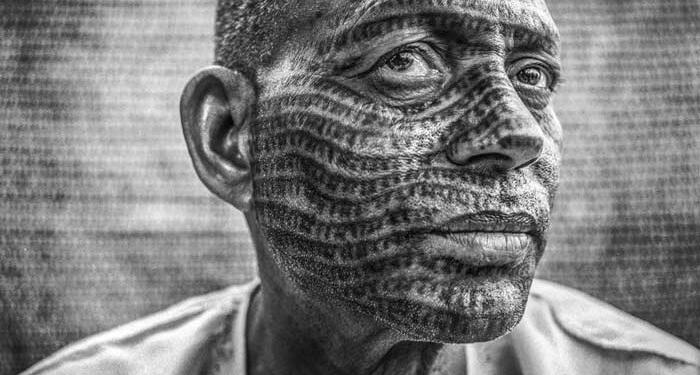Showing their true devotion for Bhagwan Ram, a tribe spread across Chhattisgarh and the coal belt of Bihar is the epitome of selfless loyalty towards the God. The Ramnami Samaj and its members have their bodies, including faces completely covered with the sole iteration of Ram. There are several theories behind the start of the practice amongst this community but all point out one thing and that is their undying love and fidelity for Bhagwan Ram.
According to a Navbharat Times report, Kameshwar Chaupal, a member of Ram Janmabhoomi Teerth Kshetra Trust who has worked closely with the Ramnami people stated that their origin story is rooted in the unjust Mughal rule.
Reportedly, the people of this sect say that when the Mughals tried to separate them from Ram, everyone got the name of Ram tattooed on their whole body.
Parsuram Bharadwaj and the miracle of Bhagwan Ram
Meanwhile, according to some other reports, the practise of tattooing the body with Ram finds a mention in a local story. According to a local legend, Parsuram Bhardwaj, the son of a low-caste sharecropper born in Charpara village in the Janjgir-Champa district of Chhattisgarh in the mid-nineteenth century laid the foundation of the sect.
Parsuram had leprosy and faced with the social stigma, he decided to lead a life of a renunciant. During this time, he met a sadhu (sage), who blessed him and asked him to continue reading Ramayana. The next morning, Parsuram discovered that all the signs of his illness had disappeared from his body, and instead the word ‘Ram-Ram’ appeared in the form of a tattoo on his chest.
The villagers saw Parsuram as a blessed man and were intrigued by his story and the cure started tattooing themselves with the same. Initially, four villagers got Ram-Ram tattooed on their forehead which quickly increased to a dozen in under a year.
Read More: Bhagwan Shri Ram will forever be the rightful king of Bharatavarsha
A form of rebellion from the Adivasis
Other reports suggest that when untouchability was at its peak in the country, the Adivasi’s were not allowed in the temple to pray to their beloved Lord Ram. As a form of rebellion, the Adivasi’s got themselves inked with Ram-Ram and the practice continued ever since.
The secular lobby of the country which believes that Adivasi’s or Dalits are not Hindus should sit and talk with the people from Ramnami samaj.
The life and belief system of the Ramnami samaj
The members of the sect sing praises of the quintessential Ideal Man of Tulsidas’ Ramayan and make Ram bhakti the be-all and end-all of their lives.
Unlike many of the tribal tattoos we find in Asia, the Ramnami do not discern the gender of the person being tattooed. One can get tattooed anytime he/she wants.
The ink for the tattoo is prepared with locally sourced ingredients. According to the locals, Kerosene oil is burnt in a lamp under an earthen pot, and the soot is collected on the inside walls of the pot, which is then used as ink for the tattoo.
According to their religious practices, Ramnamis do not drink or smoke must chant the name “Ram” daily, and are exhorted to treat everybody with equality and respect. Almost every Ramnami household owns a copy of the Ramayana epic — a book on Lord Rama’s life and teachings — along with small statues of Hindu deities.
Modernity and the dwindling numbers
However, with modernity and change in the socio-regional landscape, the community and its numbers are dwindling. At one time, their population stood anywhere near 6 Lakh but it has come down to 100,000 with some estimates suggesting only 20,000 Ramnami remain.
Moreover, the younger generation of the Ramnami is not getting tattooed completely as they move outside to look for better employment opportunities. Unlike the other minorities, the successive governments have not done anything for the unique sect.
Ramnami Samaj is an integral and unique part of India’s fabric. And if their survival is to be ensured, the government must allow them some concessions.


































